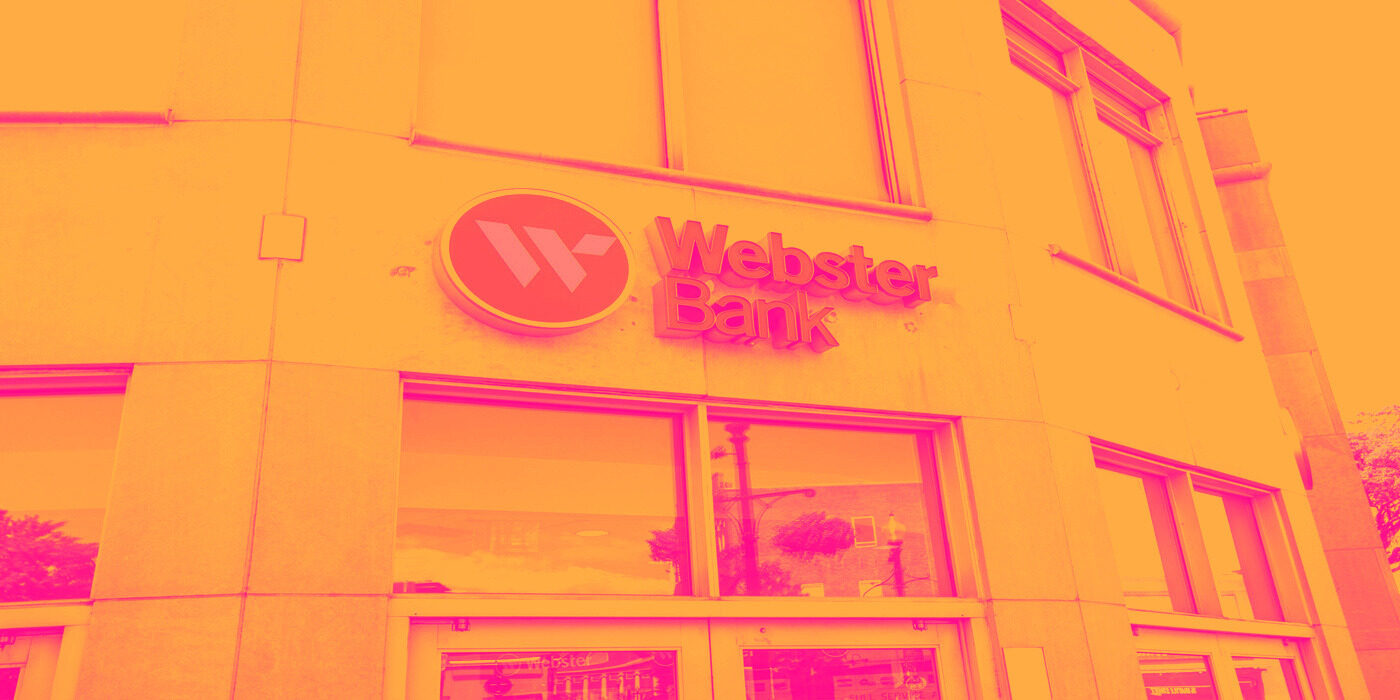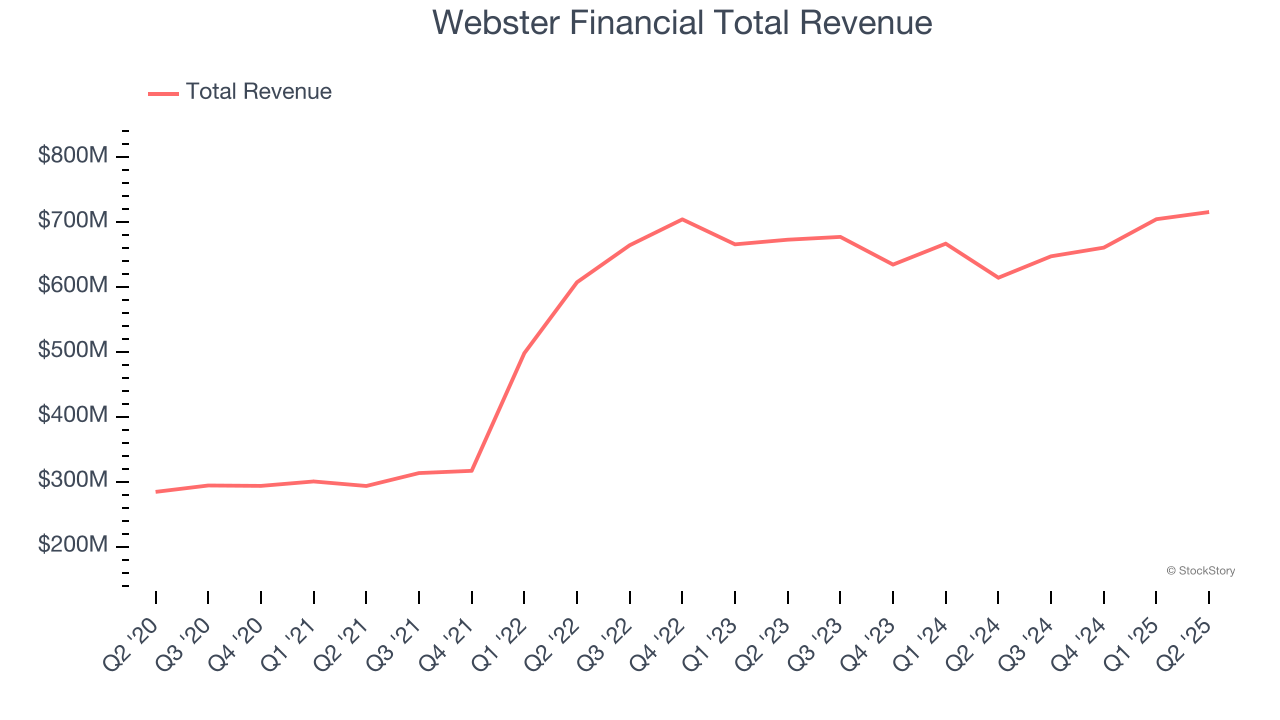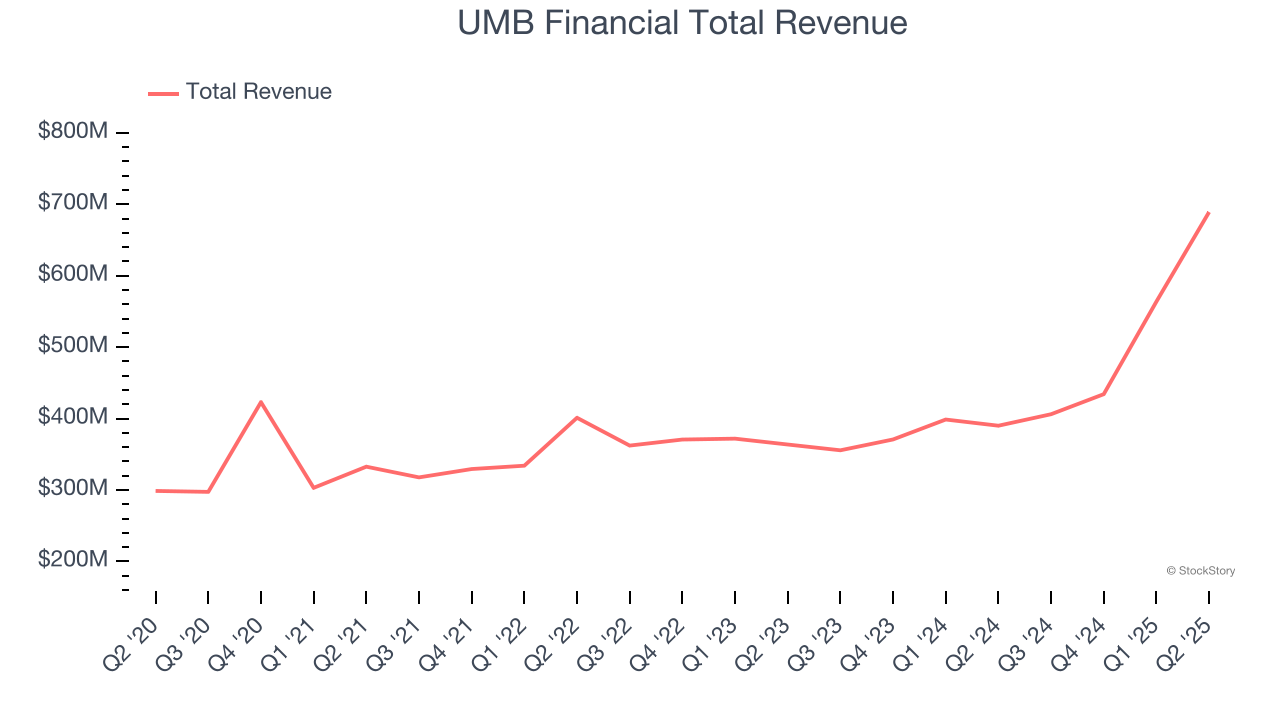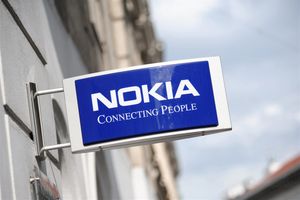
Earnings results often indicate what direction a company will take in the months ahead. With Q2 behind us, let’s have a look at Webster Financial (NYSE: WBS) and its peers.
Regional banks, financial institutions operating within specific geographic areas, serve as intermediaries between local depositors and borrowers. They benefit from rising interest rates that improve net interest margins (the difference between loan yields and deposit costs), digital transformation reducing operational expenses, and local economic growth driving loan demand. However, these banks face headwinds from fintech competition, deposit outflows to higher-yielding alternatives, credit deterioration (increasing loan defaults) during economic slowdowns, and regulatory compliance costs. Recent concerns about regional bank stability following high-profile failures and significant commercial real estate exposure present additional challenges.
The 98 regional banks stocks we track reported a satisfactory Q2. As a group, revenues were in line with analysts’ consensus estimates.
In light of this news, share prices of the companies have held steady as they are up 3.7% on average since the latest earnings results.
Webster Financial (NYSE: WBS)
Founded during the Great Depression in 1935 and evolving into a major Northeastern financial institution, Webster Financial (NYSE: WBS) is a bank holding company that provides commercial banking, consumer banking, and employee benefits solutions through its Webster Bank and HSA Bank division.
Webster Financial reported revenues of $715.8 million, up 16.5% year on year. This print was in line with analysts’ expectations, and overall, it was a satisfactory quarter for the company with a narrow beat of analysts’ tangible book value per share estimates.

Interestingly, the stock is up 5.2% since reporting and currently trades at $61.48.
Is now the time to buy Webster Financial? Access our full analysis of the earnings results here, it’s free.
Best Q2: UMB Financial (NASDAQ: UMBF)
With roots dating back to 1913 and a name derived from "United Missouri Bank," UMB Financial (NASDAQ: UMBF) is a financial holding company that provides banking, asset management, and fund services to commercial, institutional, and individual customers.
UMB Financial reported revenues of $689.2 million, up 76.7% year on year, outperforming analysts’ expectations by 8.6%. The business had a stunning quarter with a beat of analysts’ EPS estimates and an impressive beat of analysts’ tangible book value per share estimates.

The market seems happy with the results as the stock is up 11.6% since reporting. It currently trades at $122.50.
Is now the time to buy UMB Financial? Access our full analysis of the earnings results here, it’s free.
Weakest Q2: Coastal Financial (NASDAQ: CCB)
Pioneering the intersection of traditional banking and financial technology in the Pacific Northwest, Coastal Financial (NASDAQ: CCB) operates as a bank holding company that provides traditional banking services and Banking-as-a-Service (BaaS) solutions to consumers and businesses.
Coastal Financial reported revenues of $119.4 million, down 11.7% year on year, falling short of analysts’ expectations by 21.5%. It was a disappointing quarter as it posted a significant miss of analysts’ net interest income estimates and a significant miss of analysts’ EPS estimates.
Interestingly, the stock is up 9.3% since the results and currently trades at $110.86.
Read our full analysis of Coastal Financial’s results here.
Commerce Bancshares (NASDAQ: CBSH)
Founded in 1865 during the post-Civil War economic boom, Commerce Bancshares (NASDAQGS:CBSH) is a Midwest-focused bank holding company that provides retail, commercial, and wealth management services to individuals and businesses.
Commerce Bancshares reported revenues of $446.2 million, up 6.8% year on year. This result topped analysts’ expectations by 2.8%. It was a strong quarter as it also logged a decent beat of analysts’ tangible book value per share estimates and a beat of analysts’ EPS estimates.
The stock is flat since reporting and currently trades at $62.88.
Read our full, actionable report on Commerce Bancshares here, it’s free.
Amalgamated Financial (NASDAQ: AMAL)
Founded in 1923 by labor unions seeking a financial institution aligned with worker values, Amalgamated Financial (NASDAQGM:AMAL) operates a values-oriented bank that provides commercial banking, trust services, and investment management to socially responsible organizations and individuals.
Amalgamated Financial reported revenues of $82.18 million, up 4.8% year on year. This number met analysts’ expectations. Zooming out, it was a slower quarter as it recorded a narrow beat of analysts’ EPS estimates and net interest income in line with analysts’ estimates.
The stock is down 9.7% since reporting and currently trades at $30.04.
Read our full, actionable report on Amalgamated Financial here, it’s free.
Market Update
Thanks to the Fed’s series of rate hikes in 2022 and 2023, inflation has cooled significantly from its post-pandemic highs, drawing closer to the 2% goal. This disinflation has occurred without severely impacting economic growth, suggesting the success of a soft landing. The stock market thrived in 2024, spurred by recent rate cuts (0.5% in September and 0.25% in November), and a notable surge followed Donald Trump’s presidential election win in November, propelling indices to historic highs. Nonetheless, the outlook for 2025 remains clouded by potential trade policy changes and corporate tax discussions, which could impact business confidence and growth. The path forward holds both optimism and caution as new policies take shape.
Want to invest in winners with rock-solid fundamentals? Check out our Hidden Gem Stocks and add them to your watchlist. These companies are poised for growth regardless of the political or macroeconomic climate.
StockStory is growing and hiring equity analyst and marketing roles. Are you a 0 to 1 builder passionate about the markets and AI? See the open roles here.






